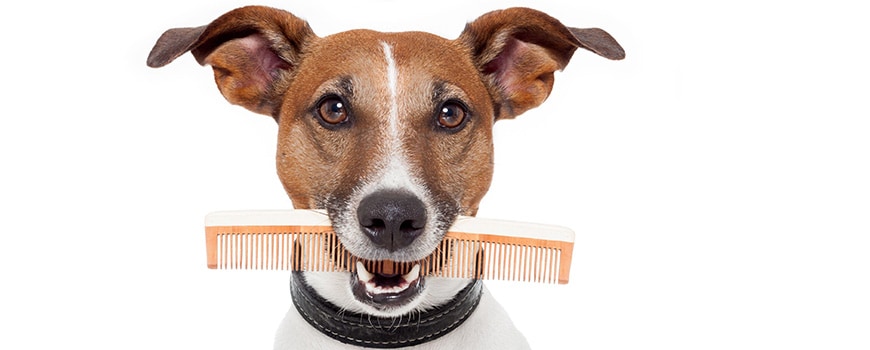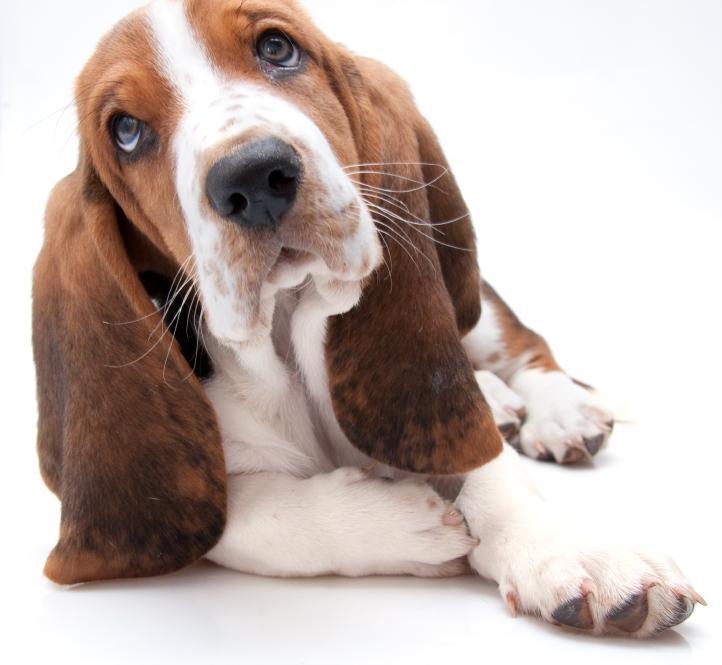It is important to realize the importance of good dental health for your dog. Brushing your Basset’s teeth will help to keep down oral odors and keep your dog’s full set of teeth. Periodontal disease not only harms the teeth and gums, but severe cases involve bacterial toxins that are absorbed into the blood supply and can cause permanent, even fatal damage to the heart and kidneys. In lesser cases, symptoms of periodontal disease can include loose teeth, loss of appetite, bad smelling breath, and diarrhea and vomiting.
Tartar is just as much an enemy to good canine dental hygiene as it is to that of a human. Tartar accumulates much more rapidly at the gum line in a dog’s mouth than it does on a human tooth. If this tartar is allowed to continue to build up, it can create gum irritation, which can become an infection, which can ultimately affect a dog’s entire health—compromising not only his healthy “smile,” but also possibly contributing to serious heart conditions.
Brushing the Teeth
- Find a quiet time when you and your dog are relaxed and comfortable.
- Make sure to use a toothpaste formulated for pets, because some ingredients in human toothpaste can be harmful to your dog. Remember, he isn’t able to spit it out after the brushing. Most dogs love the chicken-flavored toothpaste available at pet stores.
- If his teeth have never been brushed before, don’t try to use a toothbrush the first time. Just place a dab of toothpaste on your finger and let him taste it, then nib his teeth with your fingertips. This may take more than one attempt before he realizes this is a pleasurable experience.
- After he is used to having your finger in his mouth, place a small amount of toothpaste on the brush. Using a slow, circular motion, brush one or two teeth and the adjoining gum line. Again, this may take a few tries before your dog accepts it easily.
- Over the next few days, gradually increase the number of teeth you brush until you are allowed to brush the rear teeth, where plaque and tartar buildup can do the most damage. You should eventually work up to brushing about 30 seconds per side. Don’t worry about the inside surfaces, because dogs don’t usually build up much tartar there. Just be certain you reach the outside surface of all the teeth, especially those rear ones.
- Stop each session while it is still fun for your dog, and don’t spare the praise afterwards! He’ll soon start looking forward to the time spent with you, and the special attention.
Chewing for Dental Health
All dogs must be given the proper items to chew on during the various stages of their life. Bassets don’t chew more than any other breed, but they can be destructive if they aren’t given the proper chew toys.
Puppies and young dogs especially need something with resistance to chew on while their teeth and jaws are developing. This will help them cut their puppy teeth at the appropriate time, induce the growth of the permanent teeth already forming beneath those puppy teeth, and assist in getting rid of the puppy teeth when it’s time for the permanent adult teeth to come through the gums.
Keeping a puppy’s teeth “on schedule” is very important, because it assures proper jaw development and makes certain that the permanent teeth are settled solidly in the jaws.
An adult dog also needs to chew. No, he won’t be losing any teeth (hopefully), and he doesn’t have more teeth waiting in the wings so to speak, but nature tells him how important it is to chew things for natural tooth cleaning, gum massage, and jaw exercise, to say nothing of releasing pent-up doggy tension. For some dogs, a proper chew toy can be a veritable pacifier to keep him satisfied when his human isn’t around.
Tooth and jaw development continue until a dog is well past his first birthday, it and can continue far longer if the dog’s health has been compromised by injury or disease. Because you don’t want your puppy cutting his teeth on your new shoes, or your older dog chewing on something they could break or accidentally ingest, it’s very important to provide adequate chew toys for your dog throughout his life – not just for entertainment, but for his general health.
Be sure you choose items that will be long lasting, good tasting, entertaining, and completely safe from breaking or chipping. The best chew toys are natural bones, preferably something like 4- to 8-inch-long round shin bones. You can also try out bones made of nylon, like Nylabones, which can make long-lasting chews for your Basset.
Combat Bad Doggy Breath
No one likes to be around a dog with really bad breath. Although you can mask the odor with chew toys or charcoal biscuits, you should find the root cause of the odor. Although the bad odor may come from something nasty your pet has eaten or licked, it could be caused by something more serious. The most common cause of halitosis is periodontal disease, which is caused by plaque (bacteria). Other causes include metabolic disease (diabetes, uremia); respiratory disease (rhinitis, sinusitis, neoplasia); gastrointestinal disease (megaesophagus, neoplasia, foreign bodies); dermatologic disease (lip fold pyoderma); or nonperiodontal oral disease (orthodontic, pharyngitis, tonsillitis, neoplasia).
As you can see, bad breath isn’t just pesky, it can be a potential health threat. If you notice your Basset’s breath smelling foul, have a veterinarian check him thoroughly. In the meantime, you can make your dog’s breath fresher with this easy recipe to help neutralize the problem, using activated charcoal, which is readily available at your local pharmacy or market.
Biscuits against bad breath:
2 cups brown rice flour
1 tablespoon activated charcoal
3 tablespoons canola oil or vegetable oil
1 egg
1/2 cup chopped fresh mint
1/2 cup chopped fresh parsley
2/3 cup low-fat milk
Preheat oven to 400°F (204°C). Combine the flour and activated charcoal in a small bowl. Add the rest of the ingredients, mixing well after each addition. Using a teaspoon, drop the biscuits about 1 inch (2.5 cm) apart onto a well-greased cookie sheet. Bake the biscuits for 15 to 20 minutes, or until golden brown. Cool thoroughly. Store the biscuits in the refrigerator in an airtight container.


